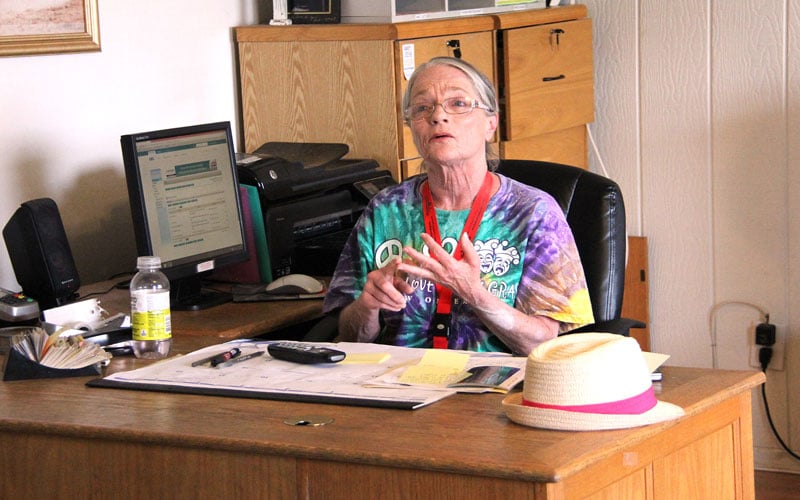
Wendy Miller, licensed therapist and manager at Mandalay Transitional Living Center in Phoenix, discusses how her facility helps people kick addiction. (Photo by Claire Cleveland/Cronkite News)
Arizona has received a $3.6 million grant from the Centers for Disease Control and Prevention to combat prescription drug addictions, part of a federal effort to give states money to prevent overdose deaths.
The grant, which will be dispersed over four years and managed by the Arizona Department of Health Services, will be used for “prescription drug monitoring programs, improvements to opioid prescribing practices and prevention efforts at the state and community level,” according to the state health department’s website.
Health department officials didn’t respond to multiple requests from Cronkite News for specific information about Arizona’s program.
The CDC estimates that opioid deaths have quadrupled nationwide since 1999 and 16,000 people died in 2013 from overdoses. The Prescription Drug Overdose: Prevention for States program has allocated $20 million among 16 states, including Arizona.
Earlier this year, the Cronkite News special report Hooked: Tracking Heroin’s Hold on Arizona, documented the struggle of drug addicts and how the rampant abuse of prescription drugs is leading to more heroin addictions, especially among young Arizonans.
A Cronkite News analysis of data from the state health department shows 12,000 people were treated in Arizona emergency rooms between 2009 and 2013 for heroin, methadone and other opioid overdoses.
“In 2014, approximately one Arizonan died every day from an overdose due to prescription opioid pain relievers,” according to the health department’s news release.
Maricopa County saw more than half of the emergency room visits – 6,700 – while Pima County reported just over 2,000, according to the Cronkite News analysis. The recent CDC grant is meant to give states the funding and resources needed to prevent overdose deaths related to prescription opioids.
Wendy Miller, a licensed therapist and manager at Mandalay Transitional Living Center in north Phoenix, doesn’t receive any money, private or otherwise, to help recovering addicts. She would like to see grant money help organizations like hers.
“We’re a nonprofit, we have a budget, I turn people away every single day because they don’t have the funds to move into my facility,” Miller said. “We need scholarships, we need maintenance money, but mainly we need help so that I am not having to turn so many people away when they really want the help, it’s a homeless shelter after that if they cannot afford to continue to take the next step into practicing the recovery process.”
Mandalay provides transitional housing, or an “in-between,” for recovering addicts that allows them to find a stable job and continue to work on their recovery, Miller said.
For Michael Frazier, assistant city manager and former police chief of Surprise, anti-drug advertising is one of the most important ways to help prevention.
“Study after study shows that the ‘your brain on drugs’ ads lead to a drop in drug use. When the ads were pulled, the trend lines went up,” Frazier said. “We know that heavy media intervention and education works. Not just television ads but though social media as well. There’s the phrase ‘out of sight, out of mind,’ but we wanna put it in your mind.”
Registered nurse Maureen Roland is an educator at the Banner Poison and Drug Information Center, which has a 24-hour-a-day hotline for poison and drug overdose questions. Every day she gets calls from people who think they have overdosed on drugs either intentionally or unintentionally.
“A lot of the calls we get are kind of accidental misuse of opioids and then we do get the overdoses too,” Roland said. Prescription drug overdosing “is a big issue, we do see that people are being prescribed it younger and younger and often unnecessarily.”
Miller agrees and added that educating doctors about the effects of overprescribing will help to decrease the incidence.
“Doctors should be educated and care more about what they are prescribing instead of just prescription, prescription, prescription, opiate medication, pain pills and benzodiazepines,” Miller said.